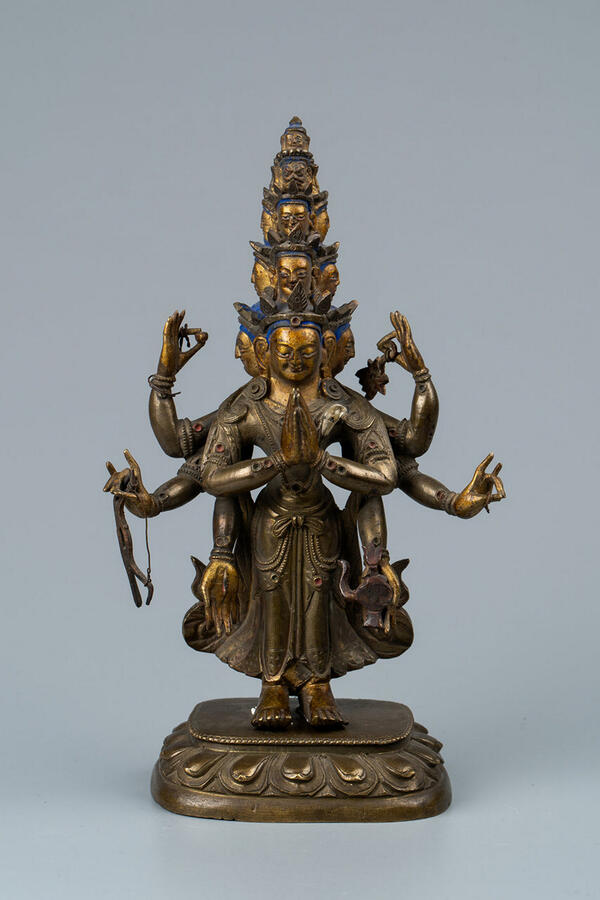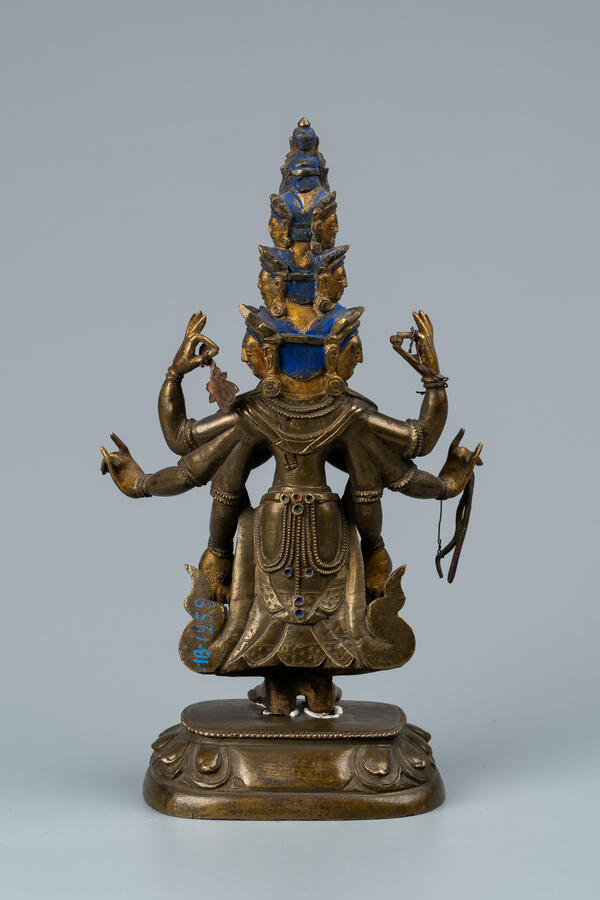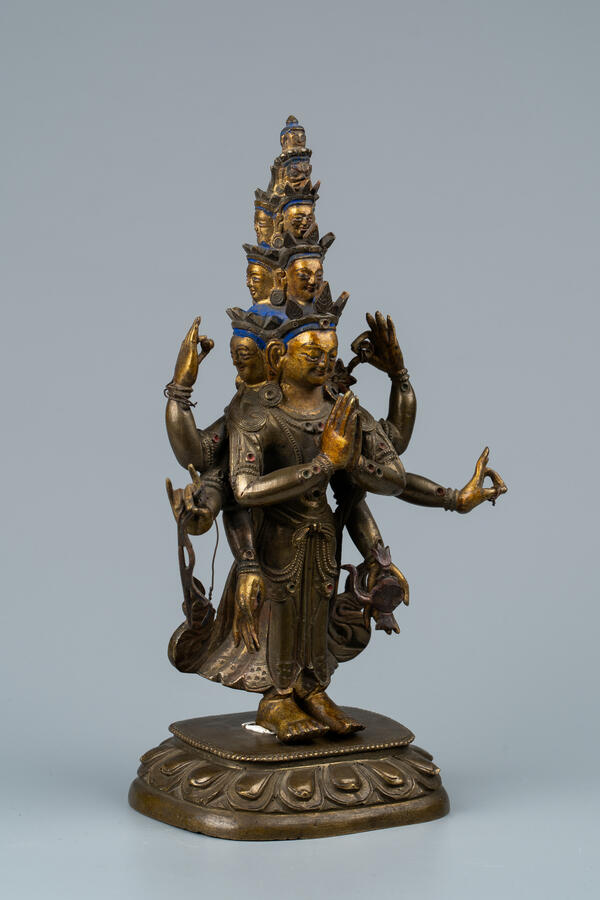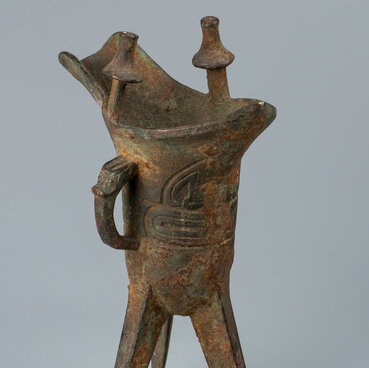The Samara Regional Art Museum received monuments of Buddhist and Lamaist art from the collection of Russian orientalist Aleksei Matveevich Pozdneev.
A small figurine of bodhisattva Avalokiteśvara stands out among the various images of Buddha Shakyamuni and bodhisattvas. “Bodhisattva” literally means “a living being (sattva)” who strives for enlightenment (bodhi) and practices altruism. The Sanskrit word “Avalokiteśvara” stands for one of the most significant deities — the Buddha of Compassion, who is the embodiment of the compassion of all Buddhas and who gives mercy to all things.
The meaning of the name can be understood by translating each root of this polysyllabic word: “ava” — down; “lokita” — to look, observe; “svara” — noise. Thus, Avalokiteśvara is the one “observing the noise below” or, more poetically, “heeding the earthly sounds”, a “patron looking down from above”, a “loving gaze”. The earthly sounds or noise is understood as the prayers of believers, to which the bodhisattva is always attentive and responds.
The importance of Avalokiteśvara in Buddhist philosophy is difficult to overestimate. He is revered as one of the most important deities by almost all schools, especially by those of northern Buddhism (that is, Tibetan Buddhism and various forms of Buddhism of the Mongolian and Turkic peoples). According to the Mahayana tradition, Avalokiteśvara promised to renounce his own liberation until he hears all the pleas of those who ask and until he helps everyone to attain Nirvana and escape from the cycle of samsara.
The bodhisattva can be represented in 108 different guises: with two, four, eight or even a thousand hands, with one or eleven heads, painted in scarlet or white, in a monk’s robe, holding a lotus flower — this list can go on and on.
An eight-armed and eleven-faced bodhisattva is housed in the Samara Art Museum. The deity stands on a lotus, slightly spreading his feet apart. Each of the eleven heads has a third eye. Nine heads stand on top of each other in three lines, they are multicolored: snow-white, burgundy and green. Above is the face of Vajrapani (a protective bodhisattva) which expresses anger, and at the very top is Amitabha (the buddha of comprehensive love). Each palm makes a special gesture or squeezes an object: a cycle of samsara, rosary beads, a bow with an arrow, a vase, and a lotus bud.
A small figurine of bodhisattva Avalokiteśvara stands out among the various images of Buddha Shakyamuni and bodhisattvas. “Bodhisattva” literally means “a living being (sattva)” who strives for enlightenment (bodhi) and practices altruism. The Sanskrit word “Avalokiteśvara” stands for one of the most significant deities — the Buddha of Compassion, who is the embodiment of the compassion of all Buddhas and who gives mercy to all things.
The meaning of the name can be understood by translating each root of this polysyllabic word: “ava” — down; “lokita” — to look, observe; “svara” — noise. Thus, Avalokiteśvara is the one “observing the noise below” or, more poetically, “heeding the earthly sounds”, a “patron looking down from above”, a “loving gaze”. The earthly sounds or noise is understood as the prayers of believers, to which the bodhisattva is always attentive and responds.
The importance of Avalokiteśvara in Buddhist philosophy is difficult to overestimate. He is revered as one of the most important deities by almost all schools, especially by those of northern Buddhism (that is, Tibetan Buddhism and various forms of Buddhism of the Mongolian and Turkic peoples). According to the Mahayana tradition, Avalokiteśvara promised to renounce his own liberation until he hears all the pleas of those who ask and until he helps everyone to attain Nirvana and escape from the cycle of samsara.
The bodhisattva can be represented in 108 different guises: with two, four, eight or even a thousand hands, with one or eleven heads, painted in scarlet or white, in a monk’s robe, holding a lotus flower — this list can go on and on.
An eight-armed and eleven-faced bodhisattva is housed in the Samara Art Museum. The deity stands on a lotus, slightly spreading his feet apart. Each of the eleven heads has a third eye. Nine heads stand on top of each other in three lines, they are multicolored: snow-white, burgundy and green. Above is the face of Vajrapani (a protective bodhisattva) which expresses anger, and at the very top is Amitabha (the buddha of comprehensive love). Each palm makes a special gesture or squeezes an object: a cycle of samsara, rosary beads, a bow with an arrow, a vase, and a lotus bud.






